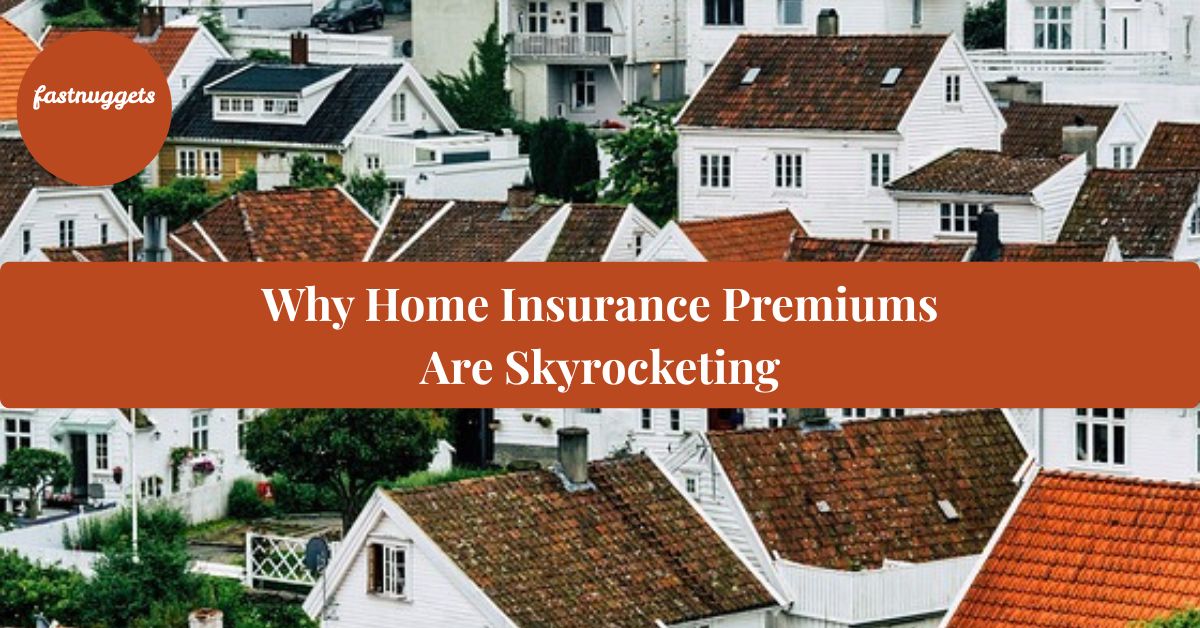Introduction
If you’ve recently opened your home insurance renewal letter and felt your jaw drop, you’re not alone. Across the United States, homeowners insurance premiums are skyrocketing, with some states seeing increases of 20% to 40% in just the past year. For many families, the rising cost of coverage is creating real financial strain and even forcing some to consider going without insurance altogether.
But what’s driving these steep hikes? And more importantly, what does it mean for homeowners now and in the future? Let’s break it down.
Climate Change and Extreme Weather
One of the primary reasons for these premium hikes is climate change. Severe weather events such as hurricanes, wildfires, floods, and hailstorms are becoming more frequent, more intense, and more costly.
Insurance companies base their rates on risk. As the risk of damage increases, so does the cost to insure homes. For example:
- Florida homeowners are facing rate hikes due to stronger and more frequent hurricanes.
- California residents in wildfire-prone areas are seeing insurers pull out entirely.
- Midwest states are experiencing rising premiums due to severe hail and storm activity.
According to the National Oceanic and Atmospheric Administration (NOAA), the U.S. experienced 28 separate billion-dollar weather disasters in 2023 alone a record-breaking number.
Why Insurance Companies Are Retreating from High-Risk Areas
The rising frequency of catastrophic claims means insurers are paying out more than they collect in premiums in certain areas. This has caused some companies to stop offering new policies or non-renew existing customers in high-risk states.
When major insurers leave, fewer companies are left to compete, which drives premiums even higher. In states like Florida, Louisiana, and California, this has created what experts call an insurance availability crisis where coverage is either too expensive or nearly impossible to find.
Other Factors Driving Premium Hikes
While climate change is the headline culprit, other factors are adding fuel to the fire:
- Rising Construction Costs – Materials like lumber, concrete, and steel are more expensive, which drives up the cost to rebuild after damage.
- Labor Shortages – Fewer skilled workers in the construction industry mean longer rebuild times and higher labor costs.
- Reinsurance Costs – Insurance companies themselves buy insurance (called reinsurance) to protect against massive losses. Reinsurance rates have also surged due to global climate risks.
- Inflation – The general rise in prices affects everything from repair costs to replacement appliances.
What This Means for Homeowners
If you’re a homeowner, rising premiums can impact you in several ways:
- Higher Monthly Expenses – If your home insurance is bundled into your mortgage payment, you may see your total monthly payment go up.
- Tighter Budgets – Higher insurance costs may force you to cut spending in other areas.
- Risk of Going Uninsured – Some may be tempted to drop coverage, but this leaves you financially exposed.
- Impact on Home Values – In areas with unaffordable insurance, demand for housing may drop, affecting property values.
How to Reduce Your Home Insurance Premiums
While you can’t control the weather, you can take steps to lower your insurance costs:
- Shop Around – Compare quotes from multiple insurers. Even small savings can add up.
- Increase Your Deductible – A higher deductible means a lower premium, but be sure you can afford it if you need to file a claim.
- Bundle Policies – Combine home and auto insurance with the same provider for discounts.
- Harden Your Home – Install storm shutters, reinforce your roof, or use fire-resistant landscaping to reduce risk.
- Review Coverage Annually – Ensure you’re not overpaying for coverage you don’t need.
The Future of Home Insurance in a Warming World
Experts predict that without significant action to combat climate change, home insurance premiums will continue to rise in coastal and wildfire-prone areas. Some states are already exploring state-backed insurance programs to fill gaps left by private insurers.
For homeowners, staying informed and proactive is key. By understanding the factors behind premium increases and exploring ways to reduce your risk, you can better navigate the challenges ahead.
Conclusion
The rise in home insurance premiums is more than just a financial inconvenience it’s a sign of deeper changes in our climate, economy, and housing market. Homeowners today face a dual challenge: protecting their property while managing affordability.
The best defense? Stay informed, take steps to reduce your risk, and work with an insurance agent who understands your local market. The reality is that insurance will likely never be “cheap” again in high-risk areas but with the right strategies, you can keep your coverage without breaking the bank.
